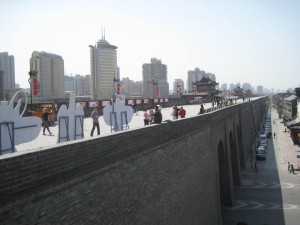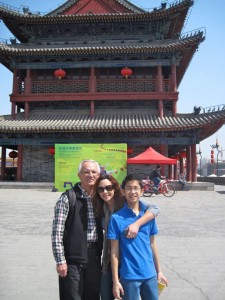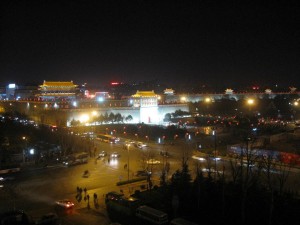The Great Wall of China was built by a number of emperors starting with the first emperor Qin and finished during the Ming Dynasty. It really isn’t one wall, but a series of walls built at different times. The longest portion is about 5500 km long, with about 3800 km of actual wall visible.
Recently some of the wall has been restored and is a popular tourist spot, and definitely a must see. Here are a few facts about the Great Wall:
You cannot see it from space or the moon. Many like to say that, and it makes good conversation, but when Neil Armstrong was asked, he said that he couldn’t see it. Shuttle crew have never seen it, and it isn’t surprising since the wall is made from surrounding stone – so it would be difficult to discern from the surrounding mountain.
While the first wall was built by Qin, there is none of that remaining. Most has been rebuilt. Qin, the first emperor who united China in 221 BCE, was familiar with walls. Whether the wall was built to keep people out, or as a barrier, or for tariff collection is debated. The wall around the city of Xi’an has been rebuilt, and it is wide enough for three cars. A huge wall, this was used to surround the old city. It was wide because that would allow men on chariots or horses to resupply the areas that were under attack quickly.
The old walls were built to keep people out – or in, and since Qin had united China, there was always fear of attack or unrest. The original walls had been lost over time, and occasionally a bit was found. A few years ago the wall was rebuilt to its original specifications, as well as the Great wall.
The Great Wall around Beijing, however, is not that wide. In fact, it is probably one lane wide, and going up and down steep mountains it was clearly not designed to either keep people out. iT was also too steep to have chariots go from one end to another, perhaps a horse. This portion of the Great Wall was designed to hook together multiple look-out stations. The enemy would not go over a mountain, rather they would go through a pass. The wall was built in strategic places so it would provide look-outs a view of the other side, and they would be able to warn when enemies were approaching.

From the top of a lookout you could see for miles. The Great Wall here was designed to be just that- a place to observe and give early warning
South East of Jinshanling, is the Mutianyu Great Wall which winds along lofty, cragged mountains from the southeast to the northwest for approximately 2.25 kilometers (about 1.3 miles). It is connected with Juyongguan Pass to the west and Gubeikou to the east. This is the wall we visited. While you don not think that the 1.3 miles would be a difficult journey- this is like running up and down hills that you could not imagine. This wall was built primarily to look out for incoming tribes. It is so high that one could not imagine an invader coming up this mountain to scale this wall. The walls around the passes, however, were built much larger, reinforced, and it was those walls that were built to withstand invaders. The Ming Dynasty in the 14th century rebuilt many of these walls, but ultimately the Ming Dynasty spent too much money and had too many people building walls and in the end, the people let the invaders in- which became the Qing dynasty, or the last dynasty of China.
As with most walls, they cannot keep people in or out. They are terribly expensive, and ultimately make a great place for tourists to go and for those who like tourists to sell their wares.
Still, their use in signaling about incoming armies was probably its main appeal, especially in this wall built outside Beijing.
The Wall is something you should see when you go to China. But there are many stories- so get a good tour guide for the Wall, from a reputable place. We were sorry we didn’t take the guide from the Peninsula hotel, thinking the Novatel was cheaper (it was, but as you can see from a previous post, they hijacked us). Beware, this is a hike- and we were lucky that our toddler stayed with his grandparents. There will be plenty of people selling you water, tea, beer – but if your baby needs to be packed- just know that you probably won’t need to see the entire portion of the wall that is open to you.













No Responses to “GO: The Great Wall of China”